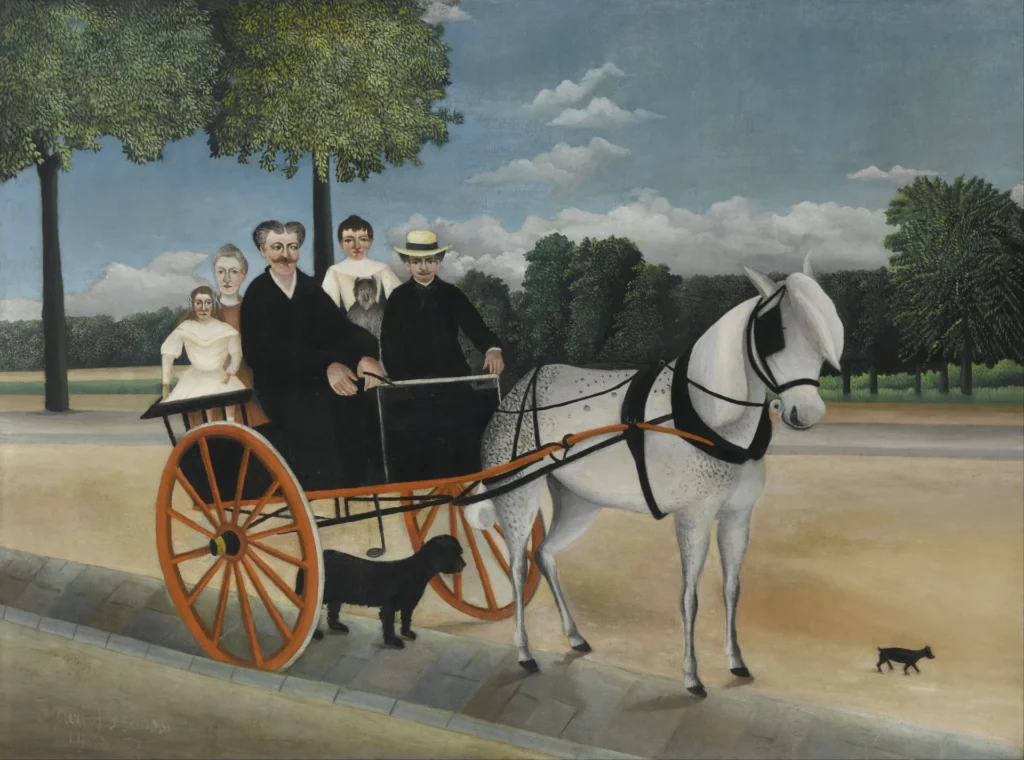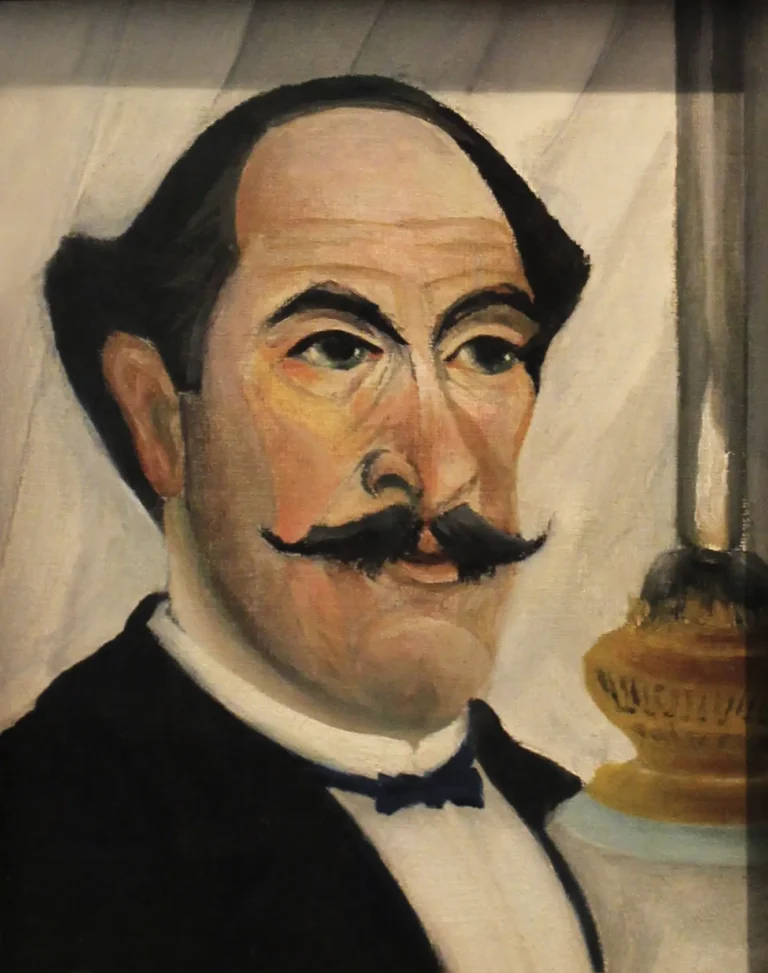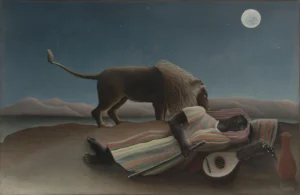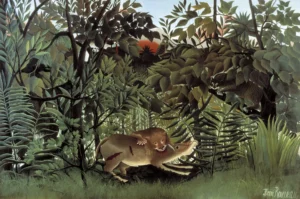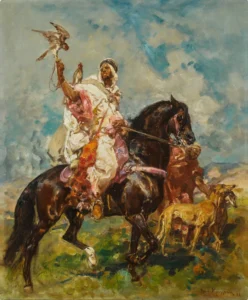La Carriole du père Junier (1908)
This delightful painting showcases Henri Rousseau alongside his neighbors, the Junier family, as they navigate the streets of France in a horse-drawn carriage. Père Junier, known for his market gardening, is pictured prominently, with family members filling the scene, accompanied by their dogs. Rousseau's skillful manipulation of composition, highlighted by his use of photography as a reference, illustrates his innovative approach to depicting domestic life. The work captures both the essence of community and the simple pleasures of rural existence, making it a significant piece in Rousseau's later career.
Year 1908
About the Artwork
Created in 1908, 'La Carriole du Père Junier' offers a heartfelt insight into Rousseau's life and his bond with the community. The painting features himself alongside the Junier family, emphasizing their everyday interactions. Drawing upon his experiences with market gardeners, Rousseau transformed an ordinary moment into a charming tableau that celebrates familial connections. While initially met with ridicule for its naïve style, this piece has subsequently been embraced for its purity and depth, affirming Rousseau's growing legacy and transition into the hearts of influential art figures like Pablo Picasso.
Did You Know
Liked what you see? Add it to your collection.
Enjoyed reading? Share it.
... continued
Composition and Subjects
The painting depicts a scene with Rousseau himself and his neighbors, the Junier family. Père Junier, who sold vegetables and would buy them every morning from market gardeners, is shown on the front seat of the carriage along with Rousseau. In the back seat are Madame Junier and her niece or nephew's daughter. The scene also includes Claudia Junier's horse and three dogs.
Technique and Inspiration
Rousseau used photographs as references for his painting. He employed a pantograph to enlarge the images and made significant changes to the composition, such as removing a tree behind the horse and adding more plantations. The figures in the painting do not strictly follow the poses in the photographs, indicating Rousseau's creative liberties in arranging the composition to avoid overcrowding.
Artistic Style and Reception
Rousseau's work is characterized by its naïve or primitive style, which was often ridiculed during his lifetime but later recognized for its artistic quality. 'La Carriole du Père Junier' reflects his unique approach to depicting everyday scenes with a focus on clear, detailed representations of the subjects and their surroundings.
Contemporary Influence
Despite the initial criticism, Rousseau's work had a significant influence on avant-garde artists. His paintings, including 'La Carriole du Père Junier,' were admired by artists like Pablo Picasso, who recognized Rousseau's genius and even hosted a banquet in his honor in 1908. This event was attended by several influential figures in the art world and marked a significant moment in the early success of the revolutionary art movement.
Historical Context
The painting is part of Rousseau's later body of work, created after he had retired from his job as a customs officer in 1893 to focus on painting full-time. It reflects his continued interest in depicting traditional and domestic scenes, which were a hallmark of his artistic style.




